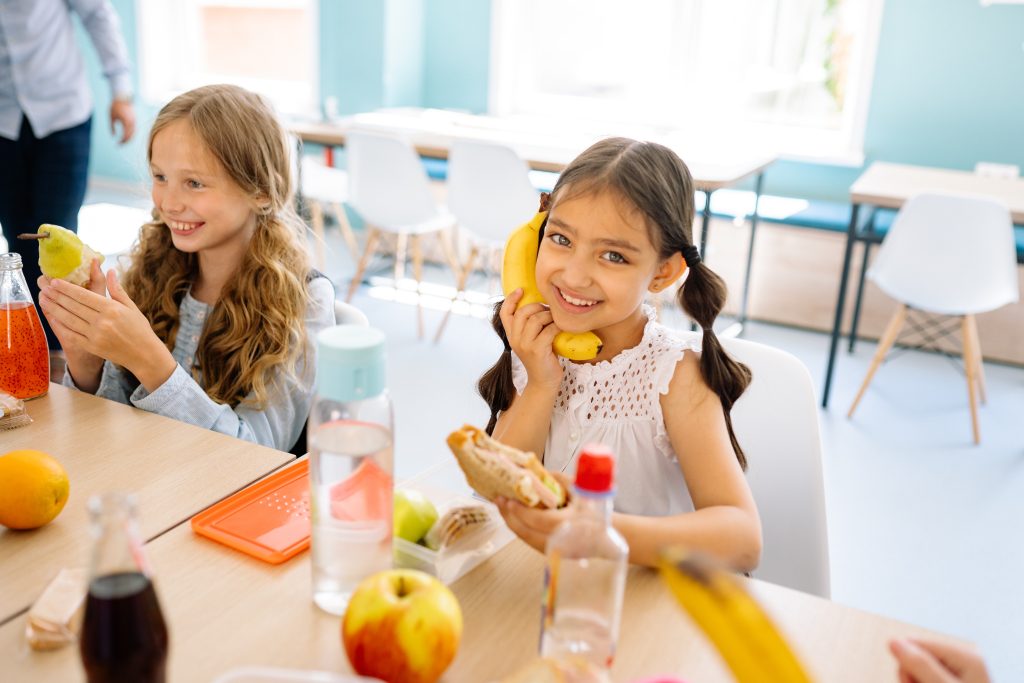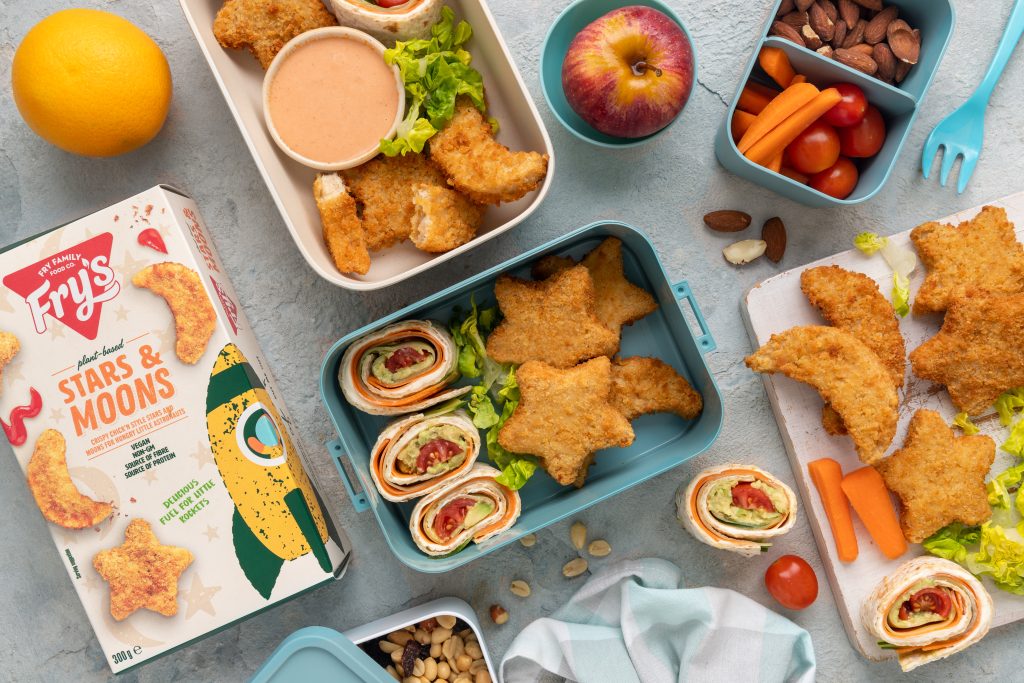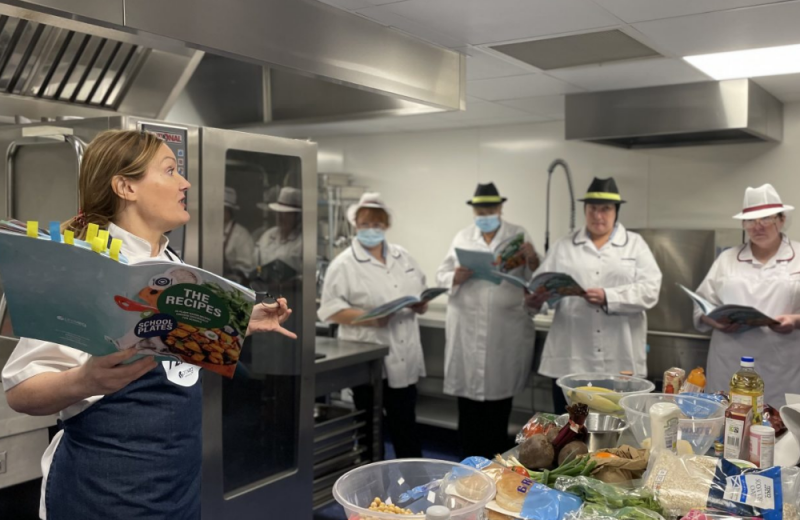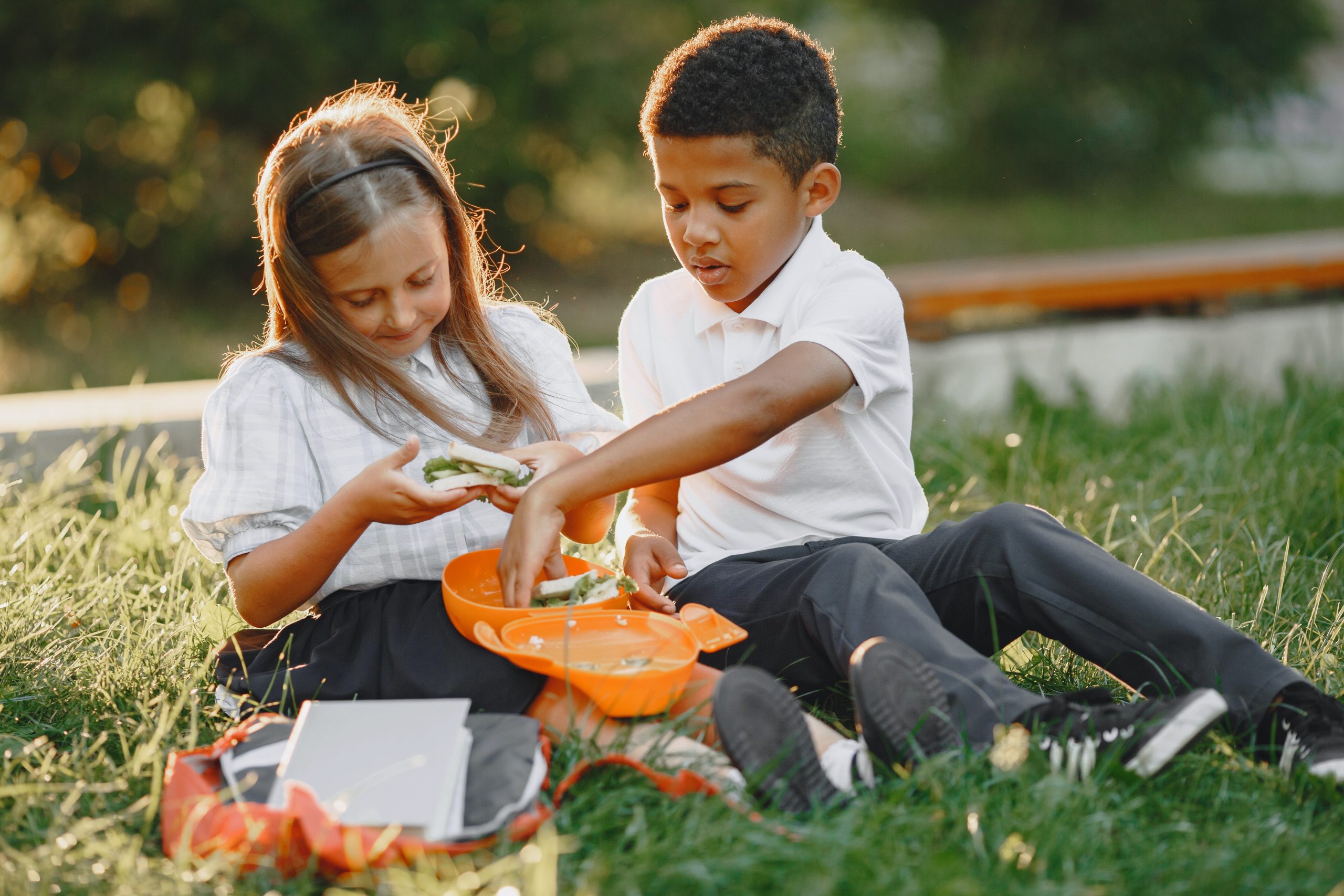Learn what it takes to produce tasty, convenient, and child-friendly foods for plant-based lunchboxes
In today’s fast-evolving food industry, meeting the diverse needs of consumers is essential for success. One segment that’s rapidly growing is the demand for plant-based products that appeal to children and are convenient for parents and caregivers.
With the back-to-school season in full swing, now is the perfect time for food industry professionals to explore innovative solutions for creating plant-based products that kids will delight in when opening their lunchboxes. How to go about it? Take your seats, because class starts now.
Understanding the market
Growing demand for plant-based alternatives
The shift towards plant-based diets among children is undeniable. Parents are increasingly looking for healthier, sustainable alternatives for their kids. Plant-based products offer a way to address these concerns while still appealing to young palates.

A recent study found that almost half of children in Berlin, Germany, rarely or never eat meat; 47% of children in Berlin most often eat a flexitarian and vegetarian diet. Meanwhile, 26% of Berlin families follow a flexitarian diet and 18% of parents would feed their child a veggie diet.1 Likewise, in the UK, a 2021 survey discovered that 8% of children aged 5–16 follow a plant-based diet, while a further 15% said they would like to.2
Benefits for health and environment
Health is the second most important factor leading flexitarian consumers to choose plant-based foods. As more adult consumers make the connection between a good diet and improved health for themselves, they’ll consider shifting to more plant-based foods in their children’s diet, too. Brands that can prove that their plant-based foods are packed with healthy, nutrient-rich ingredients will, therefore, win parents’ favor when it comes to packing lunchboxes.
Additionally, plant-based foods are more sustainable than animal-based ones – with emissions from livestock accounting for 20% of the global total!3 Emphasizing the environmental advantages of plant-based foods can tap into the growing eco-consciousness of consumers, particularly those worried about leaving a more sustainable planet for their kids.
Taste, texture, and nutrition
Mimicking traditional favorites
The key to winning over young consumers is creating plant-based products that mimic the taste and texture of their favorite traditional foods. Think plant-based chicken nuggets with a crispy exterior and tender interior, or alternative seafood products like fresh, umami sushi rolls made from pea protein.

It’s worth mentioning variety, here, too. Children who follow flexitarian or plant-based diets want to enjoy the same variety of foods as their omnivorous friends. So ensure that your product offerings are not only tasty and familiar but wide-ranging.
Nutritional considerations
Balancing taste and nutrition is crucial. Use nutritious ingredients from the get-go, as well as during any continued R&D improvement and recipe revisiting. Focus on fortifying products with essential nutrients like calcium, vitamin B12, and iron to support growing children’s needs.
Allergen-friendly options
Catering to allergen sensitivities
Addressing allergen sensitivities expands your consumer base. Explore ‘Big 8’4 allergen-free protein sources like peas, or lentils and ingredient options that eliminate common allergens.
Success stories
Brands like Enjoy Life Foods and Moo Free have excelled in producing allergen-friendly plant-based options for kids, providing a blueprint for success in this niche. Both brands are free from gluten, soy, and other animal products, with Enjoy Life also being free from peanuts, tree nuts, sesame, lupin, mustard, and sulphites! Of course, they also make sure their products taste amazing – especially for children!
Convenience and packaging
Easy prep
Mornings can be busy for families, so when it comes to making lunchboxes, ease, convenience, and versatility are valued above most else.
Focus on the above concepts by making plant-based cooking easy for parents with products that are multi-use, replicate animal-based products, and have quick prep and cooking times (five minutes or less). The quicker it can be prepped and put into a lunchbox, the better! Think, cheeze spread for a tasty sandwich or ready-to-eat falafel balls.
“When you are used to cooking meat, it’s important that the alternative you have chosen is just as simple to prepare. People tend to default to cooking what they know, especially when they are in a rush. So having meat alternatives with the same application as their meaty counterparts makes it that much easier for consumers.”
Packaging matters
For parents on the go, convenience is paramount. Consider single-serve, eco-friendly packaging that is easy to open and fits well in plant-based lunchboxes.
Sustainable solutions
Eco-conscious parents appreciate sustainable packaging. Adopt environmentally-friendly packaging, underlining your commitment to a greener future. Take PLAYinCHOC, for example. The brand house all their child-friendly treats in plastic-free packaging, which also come with sustainable and educational toys in each pack!
Kid-centric marketing
Captivating young audiences
Child-friendly branding and marketing are vital. Engage young consumers through colorful packaging, playful mascots, and fun product names.
“Our brand is all about showing love through food. It’s a family brand. Our brand is familiar, purposeful, and kind. Our food is made with love and plants.”
The power of storytelling
Narratives that resonate with children and parents, such as the journey of ingredients from farm to fork, can create a deeper connection with your brand.
Successful campaigns
Great example brands include Annie’s Homegrown, and The Fry Family Food Co. Both use playful shapes and imaginative storytelling to appeal to children and reassure parents about product quality. Emanate the strategies of these brands in your own marketing.

Collaborations and partnerships
School partnerships
Take your strategy a step further than targeting plant-based lunchboxes and collaborate with schools and educational institutions to introduce your plant-based products into cafeteria menus. This fosters brand loyalty among young consumers and carers. For example, July 2023 saw Spanish plant-based meat brand Heura collaborate with 450 schools across the Iberian peninsula to introduce plant-based meat into school meals. August brought a similar partnership in the UK between UK nursery school food supplier Nursery Kitchen and plant-based company Gosh!. The two came together to provide healthier, more sustainable snacking options to children under five (like Gosh! Sweet Potato Pakora and Beetroot Falafel).
Success stories
ProVeg UK School Plates

ProVeg’s School Plates program helps UK-based school caterers make small changes to menus that can have a big impact on the health of children and the planet.
The team works with local authorities, schools, and private caterers, offering a range of menu support services and workshops, including menu consultation and advice, new recipes and recipe development, and impact assessment. As a non-profit organization, we provide these services completely free of charge – we simply ask that our costs are covered.
Download the School Plates Resource Guide and head to the website to learn more about School Plates. Watch this space as ProVeg expands the school program to further European countries!
Conclusion
As the demand for plant-based products continues to rise, there is a unique opportunity to create innovative and appealing options for children’s lunchboxes.
By understanding market trends, prioritizing taste, texture, and nutrition, embracing allergen-friendly options, focusing on convenience and packaging, and implementing kid-centric marketing strategies, businesses can tap into this growing segment and contribute to healthier, more sustainable diets for the next generation.
In the ever-evolving world of plant-based food, those who cater to the unique needs of children and their caregivers will find themselves well-positioned for success in the back-to-school season and beyond. As we step into this exciting journey of plant-based innovations, let’s ensure that every child’s lunchbox is filled with delicious, nutritious, and planet-friendly options.
For support with your plant-based product strategy, get in touch with our experts, [email protected], and support ProVeg’s work by donating, here.

References
- Berlin children rarely or never eat meat, (2023). Vegconomist. Available at: https://vegconomist.com/market-and-trends/47-percent-berlin-children-rarelyor-never-eat-meat. Accessed 2023-06-13.
- Survey looks at children’s eating habits, (2021). BBC Good Food Nation. Available at: https://www.bbc.co.uk/newsround/58653757. Accessed 2023-06- 13
- Xu, X., Sharma, P., Shu, S., et al. (2021): Global greenhouse gas emissions from animal-based foods are twice those of plant-based foods. Nature Food 2(9), 724–732. Available at: https://www.nature.com/articles/s43016-021-00358-x
- The eight major food allergens that are responsible for the majority of allergic reactions in individuals with food allergies. These include: milk, eggs, peanuts, tree nuts, wheat, soy, fish, and shellfish.



